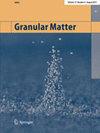Liquefaction behaviors of sand deposits with impervious stratum are quite different from that of homogeneous geological conditions. However, the micro- liquefaction behaviors of the interlayered deposits have been infrequently documented. This study introduces a novel experimental methodology aimed at examining the influence of silt interlayer on the liquefaction mechanisms of sand deposits from both macro and micro perspectives. In the experiments, the Excess Pore Water Pressure (EPWP) was analyzed in conjunction with recorded micro liquefaction images. The migration mechanism of fine sand particles beneath the silt interlayer was revealed. The existence of low permeability interlayer leads to prolonged retention of EPWP beneath the silt interlayer. Substantially, the water film on the base of the interlayer is demonstrated to be the mixture of pore water and silt particles flowing with high velocity under seismic motions, thereby resulting in significant strain localization. An agminated zone of loose fine sand particles is usually generated beneath the silt interlayer after the dissipation of EPWP.



